Josh Kilmer-Purcell's Blog, page 5
August 21, 2018
How Roadside Ice Cream Stands Saved Farms

In upstate New York, a sure sign of summer is when the numerous roadside ice cream stands around the area start to open their doors. Now, this doesn’t necessarily mean that winter is over (It really never is in New York), but just that summer is coming, eventually. But these stands aren’t just a sign of summer, they are a symbol of how farmers are able to adapt and persevere through tough times.
The reason that ice cream stands have become such a tradition in New York is because upstate New York was once the dairy capital of America. During the 19th century, New York produced the most milk, cheese and butter than any other state. New York was also the first state to have a cheese-making factory, with the first one opening in Rome, NY in 1851. When New York began requiring milk to be pasteurized in 1935, Dake’s Dairy Products, (which would eventually become Stewart’s Shops, a staple of upstate New York living and producer of fine ice creams), started one of the country’s first pasteurizing plants and helped farmers from all over the region get their milk up to the new standards. Currently, New York is still a leader in milk production (We’re the 4th largest producer overall) and yogurt production (dubbed the “Yogurt Capital of the Nation” in 2014).

There’s a big gap between the time of New York’s dairy heyday and today. What filled that gap and kept farmers afloat were roadside stands. Roadside ice cream stands in particular started popping up during the Great Depression. Farming has never been the most lucrative of careers (Trust us, we know), and it especially took a hit during the early 20th century. Farmers desperately needed to come up with ways to make ends meet. With less money in the market, less people were buying groceries and that lead to a surplus in milk, produce and other farm products.
But when the going got tough, the women got going (Isn’t that how it always works? Women show up and get. things. done.) The wives of the local dairy farmers put their knowledge to the test by creating value-added items for the farm. Women were using produce to make pickles, jams, pies and more to stock pop-up farm stands. And more importantly, ice cream. Ice cream, easy to make and even easier to sell, was the real money maker for these emerging business owners.

Ice cream, like our upstate farmers, have gone through a lot of ups and downs. Ice cream was once a simple dish created first in the Second Century B.C. (They used a snow cream recipe that is similar to the one we like to make after a fresh snowfall). Italy refined the techniques of using milk and flavorings to create a creamy dessert. Soon enough, ice cream recipes were spread (and became much more gourmet) through France and finally settled in America in 1744.
When ice cream came to America, it stopped being a simple treat created by what you could find on the farm. It was exotic and rare, which meant that it could be priced at a premium. Ice cream was reserved for presidents, nobility and whomever else had the money and the power to attain the icy confection (Today, we like to enjoy ice cream on the couch after a long day in the garden).
So how did ice cream become a dish for the people? It’s all thanks to a milk seller named C. Jacob Fussell. In 1851, Fussell had a steady business helping farmers sell their milk and cream to consumers and businesses across the state. But Fussell saw problems on the horizon. Even though the 1850s marked a great time for dairy producers, the market was (and still is) finnicky. His clients were looking for a way to use their excess milk beyond bottling it or making it into butter and cheese. Fussell talked his clients into working with him to produce ice cream on a large scale. Ice cream was chic to eat, thanks to its many years of being a status symbol for the rich, and no one was manufacturing it wholesale. It was a two birds, one stone solution. (Or should we say two birds, one cone? *ba dum tss* Thanks, we’ll be here all week. Feel free to tip us in soft serve.)

By the time the Great Depression came around, dairy farmers once again turned to ice cream to turn a profit. The farmers’ wives were able to make enough money off their ice cream and pies to keep their farms afloat.
The economy eventually strengthened and so did the roadside stand business. Now farmers’ wives weren’t just using their stands to keep their farms going. They were becoming full-fledged businesses. Also, refrigeration both on a small and large scale was becoming more available and stand owners could now make more ice cream and store it for later.
Ice cream stands really reached their peak in the 1950s and 60s. Car use was on the rise and roadside ice cream and farm stands were perfect places to grab a bite on a long drive. Dairy farmers turned their roadside stands from little sheds into businesses with whimsical architecture and bright neon signs. The menus expanded past ice cream, jams and pie. Farm stands were soon becoming full-fledged restaurants.

Ice cream stands are now an indelible part of New York state’s history. Dairyland, in Sharon Springs, is one of the most vibrant reminders of these summer icons. It’s still packed every night from May to October, and is run by a great young, local, entrepreneur, Cyle, who makes sure all the food is homemade and the soft serve cones are extra, extra tall.
Many of you remember that we launched our Goat Poop chocolate candies last holiday. We didn’t plan on making any more until next holiday but decided to make one secret batch for Dairyland this summer. If customers used our secret code “Gimme some goat poop on that!”, Cyle would sprinkle on a free topping of Beekman Goat Poop. We loved being part of the summer ice cream tradition, even if it was for a limited time.

So whether you’re getting your ice cream hard or soft, in a cone, a dish, or in a cone then in a dish (Brent needs the drip protection), with lots of toppings (Josh loves vanilla soft serve drizzled with our Cajeta) or with blue goo (If you see this on the menu, order it. Trust us.) make sure that when you visit the mercantile during the summer, you plan a stop at one of these New York legends. We’ve included some of our favorite area ice cream stands below, let us know if you go!
Close by:
Dairyland
Amy’s Place
Dairy Carnival
Cooperstown Penguin
A little farther down the road:
Kurver Kreme
The Ice Cream Man
Guptill’s
Jumpin’ Jacks
Bumpy’s Polar Freeze
The post How Roadside Ice Cream Stands Saved Farms appeared first on Beekman 1802.
Fermentation and Collaboration: A Brief History of Beer

Long ago, the Mohawk Valley and Catskills were a hotbed for hops, with Cooperstown being one of the central growing and distributing hubs (Read more about that here). Through our partnerships with Brewery Ommegang and The Farmers Museum, we’ve been lucky enough to learn so much about hops growing, how difficult it was and still can be to grow this fickle plant, and the history of how hops and beer became such a huge part of American history.
Beer is one of the oldest beverages in the world. Older than the trees on the farm, older than Sharon Springs itself. William Beekman himself probably brewed his own beer since it was a farmhouse staple during his time. Traces of beer was found in pottery dating back to the 5th millennium in Iran and the written history of the beverage dates back to the time of ancient Egypt and Babylonia.
Its history is long, with many claims as to who first invented it and who first drank it. But it all boils down to a few important moments of history.
Beer production could not have begun without fermentation and China was a leader for developing delicious drinks and food via fermentation even in ancient times. The first recorded production of alcohol was in China is 7,000 B.C. and was created by fermenting rice, honey and fruit in jars. But the main ingredients for beer were not native to China, so most of their alcoholic beverages were more like what wine and liquor is like today.
 Hieroglyphics depict women pouring beer.
Hieroglyphics depict women pouring beer.
The first documented recipe for beer was found in Egypt and dates back to 5,000 B.C. (Which means beer is one of the oldest recipes ever). Ancient Egyptians documented the process on scrolls and wrote about using indigenous plants in their brews, like dates and pomegranates. Craft brewers, scientists and archeologists have worked together to find recipes like this and centuries-old methods created by members of Sumerian, Babylonian, Egyptian and Roman societies (because once alcohol was discovered, everyone wanted to make it) to recreate these ancient beers and learn more about their history.
Beer soon grew to be the drink of choice over the following centuries. One of the main reasons it was so popular was because it was regarded as the safest thing to drink. Brewing was around long before water purification was and in many areas of the world, beer was safer to drink than the local water (so next time you’re in a new town, use this as an excuse to try the local craft beers. Safety first.)

As the years went on, beer changed and evolved with the technology, ingredients and brewers available at the time. In the 16th century, Germany began to pass beer purity laws (known as “Reinheitsgebot”) and set strict standards on what ingredients could be used and what styles of beer could be made. When they first drafted these purity laws, they forgot to add yeast (something beer absolutely needs) to the ingredient list. (Which just goes to show you that politicians passing laws without fact-checking is not a new phenomenon.)
No matter who ended up actually creating what we call beer, one of the most important part of its history is how beer became a staple of society as a whole. Brewing has always flourished in farming societies. Beer in its most basic form needs hops, barley and yeast to ferment and develop. Hops and barley were staples of many ancient agrarian societies and had many uses. These societies also had the time and the space to brew and store beer.
For these rural areas, beer-making and drinking became an integral part of the community. Brewpubs were everything from temporary markets for local farmers and artisans to town halls. Brewers would work with their neighbors and trade beer for ingredients and services. Tabs kept by bartenders in taverns in the newly formed United States are a written record of long nights working on legislation and nights spent celebrating the signing of the constitution, election victories and defeats. George Washington used a pub to have a farewell dinner in 1787 that racked up a $15,000 tab. (Only a small amount of that tab was for snacks. Talk about a send-off!)

In Germany, these events would push the limits of a pub’s capacity, leading to the establishment of the beer garden. These outdoor areas served beer, food and had entertainment. During nice weather, gossips-spreading, business dealings and more would take place outdoors in these areas.
This community minded tradition still holds up to this day. Brewers today still have partnerships with farmers and other members of their local community. Farmers can grow the grain or hops the brewers will use, and brewers will give the farms their spent grain. These are the grains that are left after the brewing process is finished. Spent grain is great for feeding livestock, because the grain still retains nutrients after being used in brewing. This partnership between brewers and farmers is a win-win, with farmers earning money for their crops and brewers eliminating their food waste.


Another partnership that has stood the test of time is the one between brewery owners and local artisans. For hundreds of years, breweries and brewpubs have opened their doors for shows featuring local musicians, artists and more. Many breweries have even partnered up with local fitness studios to have events like yoga classes and CrossFit competitions in the tasting and brewing areas (sign us up).
Hops festivals are also ways in which farms and breweries get the community involved. The first industrial hop harvesting machine didn’t make it to market until 2015, meaning there were hundreds of years where farms needed a lot of hands to help harvest hops. Neighbors from around the region would come to a hops farm and help remove the hops from their fragile bines. Soon enough these gatherings turned into all out parties, with hops pickers enjoying food brought in by neighbors and fresh ale made by local breweries. These hops festivals still exist today all over the United States.

That type of communal work between farmers, brewers and neighbors still exists right here in the Mohawk Valley. Our work with Brewery Ommegang has led us to create unique projects that could only come from goat farmers and brewers getting together to trade recipes, products and ideas. The idea of neighbors helping neighbors is something we can always get behind.
The post Fermentation and Collaboration: A Brief History of Beer appeared first on Beekman 1802.
August 20, 2018
How to Throw an Old-World Italian Dinner Party

Pasta Alla Tavola is not a dinner party for the neat and petite. This Old-World Sicilian tradition is all about throwing a big pile of pasta in the middle of the table and letting everyone have at it. In our opinion, Sicilians really struck gold when they came up with this rustic dinner party. After a long early autumn day spent harvesting fruit, vegetables and everything in-between, there’s nothing like an Italian dinner party to lull you into a carb coma.
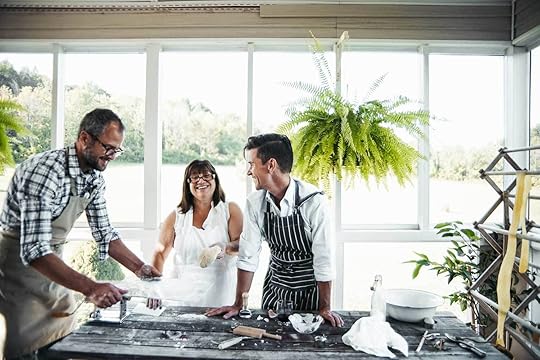
We’re lucky enough to have a neighbor who knows all about throwing an Alla Tavola. Rose Marie Trapani is our neighbor in the most literal sense (seriously, she’s a stone’s throw from the farm) as well as in the meaning of what it means to be a good neighbor. When we were working on our cookbook A Seat at the Table, which features many of Rose Marie’s recipes, she taught us all about Pasta Alla Tavola (Alla Tavola translates to “at the table”) and even invited us to one at her house. Being able to eat Rose Marie’s delectable pasta while being taught about the traditions and events she grew up with during her childhood in Sicily was the most delicious research we’ve ever had to do.
When it comes to throwing your own end-of-the-harvest Italian dinner party, you won’t need to stray far from the traditions of the Old World. You just need to bring your appetite.
Pasta All Tavola is all about simplicity. While men worked in the fields during the day, the women of the village would prepare the space for the meal. A large millstone would be scrubbed down and placed in the center of the dining area. Since most Sicilians during that time lived on their farms, this meant placing the millstone in their backyard. This large millstone set on a stone pedestal would serve as the table because it was large enough to seat everyone. Also, no one wanted to bring their nice dishes out to the fields and potentially break them, so the need for something easy to clean and eat off of was a must.

For those who couldn’t fit around the table, or just enjoy some solitary time, you could ask one of the men to make you a “plate.” These plates were made out of prickly pear pads. Whoever had a pocket knife on them would take a few of the pads, scrape the thorns off, cut the pad in half lengthwise and scoop out the innards. A quick rinse in the fountain and you had a clean plate to eat off of.
For a modern Alla Tavola, you don’t need to have a millstone. According to Rose Marie, most modern versions of the Alla Tavola are served on the same boards that pasta is made on. These pasta boards usually have a lip running around the edge and are helpful for catching any food that goes astray. A table covered in a thick vinyl tablecloth or heavy-duty aluminum foil are good alternatives. Big plates can be used for whoever can’t fit at the table.

When it comes to utensils, the weapon of choice back in the day was a willow or bamboo branch. Rose Marie’s dad would be in charge of making the forks for everyone by whittling down the end of a branch so it was able to reach and pull food out from the center of the millstone. A fork with a long handle can be used for your modern Alla Tavola and you could even lessen the mess factor by providing a few pairs of tongs to your guests. But this is all about the mess, so embrace it.
For beverages, any table wine will do. In Sicily, this would be a pouch or jug of wine served in tin cups. Not a drinker? Well lucky for you, the nearby fountain would have all the fresh water you could drink.
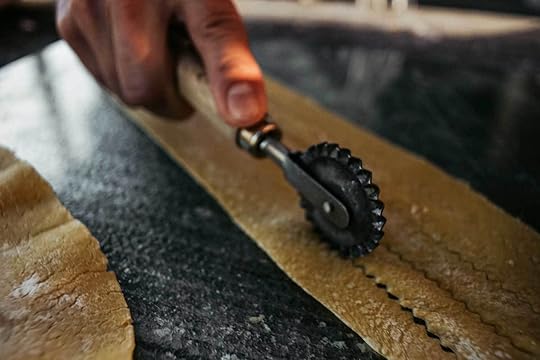
Now for the main event. In a traditional Alla Tavola, the eating process goes pasta, then meat, then bread, and you set up the meal in that pattern. When Rose Marie does an Alla Tavola, the pasta is fresh, but we won’t judge you for using store bought (you’re going to need a lot of pasta after all.) After the pasta is done cooking, a small amount of sauce is mixed in. You want to just coat the noodles (over-saucers will be dealt with later). Take your cooked and sauced pasta and pour it in a large circle around the center of the table.

Then it’s time for the meat. Alla Tavolas were a feast for everyone, so any meat available could be used (you could even go meatless if times were especially tough.) Meatballs, sausage, beef and even rabbit could find its way onto your millstone. Whichever protein you choose, it should also be lightly sauced and then set in the circle of the pasta.
With a ladle, make small divots in the circles of pasta and meat and fill the divots with sauce. If you like adding fresh herbs to your pasta, now is the perfect time to tear up some basil and sprinkle it onto the meal. Now you can pass around your bread basket and fresh parmesan.
Make sure everyone has a bib (like we said, this meal is messy!), a full glass and dig in. Don’t be shy, or your neighbor may have some fun and try to “steal” your food away. It’s every man for themselves in this pasta free-for-all.
After talking with Rose Marie and experiencing the Alla Tavola ourselves, we know that it will be a staple in our lives for years to come. If you’re interested in participating in our version of this fall harvest meal, learn more here. If you decide to have one in your own home, take plenty of pictures and share them with us! We love to see Neighbors making new traditions.
The post How to Throw an Old-World Italian Dinner Party appeared first on Beekman 1802.
August 16, 2018
What’s A Biofectant? The Happy Place Science

The Happy Place Story
A lot of people know our story. We were two New York City guys – Brent was a physician who started Martha Stewart’s Health & Wellness Division, Josh was a best-selling author and an advertising exec – and one weekend, 10ish years ago, we bought our farm in upstate NY.
We took in a neighboring goat farmer who was losing his farm, and when we lost our jobs in the recession, we turned to the goats to save our farm. And they did; it’s how we made our first batch of our famous soap, which led to all our goat milk beauty products. It’s also when we decided we were going to refer to all of our customers as “neighbors.” We believe that we should treat everyone like they are a part of our neighborhood.
Living on the farm has really inspired us to go back to the basics of natural living. (Our Heirloom Vegetable Garden has over 50 raised beds. We grow, cultivate and harvest over 80% of all the food that we consume.)
Now, we try to use Brent’s science background to really understand why and how natural ingredients work — and to make them work better. Yes, there are “natural cleaning products” on the market. But to be honest, we were sort of unimpressed. And because we are a little crazy and because, who needs sleep anyways, Brent put on his mad scientist hat and started studying the latest on natural ingredients and their cleaning power. And he did this for two years.
We came up with our own Beekman formulas of natural Biofectants throughout our Happy Place line.
A bio-what?
Think of it this way. On a counter, you have some butter. You have a couple cups of flour. You have some sugar. There’s salt, eggs. Separately, these are all just ingredients. They exist, independently. You probably wouldn’t just eat a tablespoon of baking powder. But when you whisk it together in a bowl with everything else on that counter, magic happens.
Biofectants are natural ingredients, molecularly formulated to generate the most thorough cleaning power around. Nobody else is using our formulas.
Take a look at the ingredients in the Happy Place Multi-Surface Spray:
Water
THFA
Alkyl Polyglucoside
Coco Betaine
Cocamide DIPA
Sorbitan Monolaurate
Sodium EDTA
Parfum
DMDM Hydantonin
Coco Betaine is derived from coconut and is used to break down grime, grease and dirt. Alkyl Polyglucoside is ideal for cleaning glass. Independently, they all exist to solve a purpose when it comes to cleaning.
Biofectants are created when natural and plant-based ingredients are combined in a way to work more effectively together than they do alone.
Kind of like people.

1
Happy Place Goat Milk Laundry Soap

2
Happy Place Multi-Surface Cleaner

3
Happy Place Multi-Surface Wipes

4
Happy Place Odor Eliminator
Visit the Mercantile
The post What’s A Biofectant? The Happy Place Science appeared first on Beekman 1802.
August 15, 2018
DIY Floral Coasters

A clear memory from childhood for most of us is hearing our mother or grandmother yell at us to put a coaster under our drink. Brent’s grandmother Edith had a house full of antiques and setting down a glass that was sweaty from the Carolina heat without a coaster underneath it was borderline blasphemy.
Back then we didn’t understand why it was important (some of us still don’t.) But now you will have coasters that you won’t just remember to use, you will want to show them off as well.

MATERIALS
Unfinished Wood Slices
Clear Wood Stain
Stain Brush
Wax Paper
Printer Paper
Inkjet Printer
Tape
Scissors
INSTRUCTIONS
Step 1
Source your botanical images. We searched through the New York Public Library’s digital collection. Save your images in a high resolution.
Step 2
Lay the computer paper on a flat surface, line up wax paper with the printer paper and cut to size, width-wise, making sure the wax paper is just a tad smaller than the printer paper. The wax paper should be an inch or two longer that the height of the printer paper. Do not cut this excess, fold the wax paper over the printer paper, crease and tape on the backside. Now load the paper backside up and the taped top loading in first.



Step 3
Once the image prints, remove the print carefully as the wax paper allows the ink to not dry thus allowing the print to transfer. Trim the image to the similar size of the coaster. Remove the wax paper from the computer paper, discard the print paper. Turn the image wet side down. Now use a hard, flat surface to transfer the image onto the coaster. Holding the wax paper steady and allowing it not to shift, begin pressing the upside of the wax paper on to the wood. Peel the wax paper from the coaster once done pressing. Now you have your image!

Step 4
Once the image has a moment to dry onto the wood, you can seal the ink using clear wood stain. Using a finer brush, begin to dip it into the stain, brushing the excess off as you pull the brush out of the can. Begin to coat the wood, running the brush in the direction of the grain. Allow the stain to dry overnight in a well-ventilated area, since the stain may cause irritation if in a small, closed space. Once dry begin use!


1
Spring 2017 Almanac

2
Summer 2017 Almanac

3
Autumn 2017 Almanac

4
Winter 2017 Almanac
Visit the Mercantile
The post DIY Floral Coasters appeared first on Beekman 1802.
Roll vs. Fold
There are two camps in the battle of clothes packing: the folders and the rollers. Both certainly can tout the advantages of either method. In the case of folding, it’s faster to do, and many of your items are already folded at home. But rolling takes up less space overall, and it has the added benefit of reducing potential wrinkles. How’s a traveler to know which team to join?
The best-packed suitcases contain a combination of folded and rolled clothing—sometimes, both in the same article of clothing!

How to roll
Lay article of clothing on a flat surface, bottom flat, front side facing up.
Fold in half (along the seam, if applicable).
Begin rolling the item from the short side.
Arrange in the suitcase with the roll opening down.
BEST FOR: All bottoms (pants, shorts, skirts), dresses, jackets, and non-collared tops. Secure items with hair ties to keep them rolled up in transit.

How to fold
Lay article of clothing on a flat surface, with the front facing down.
Fold in one sleeve and one-fourth of the shirt.
Repeat on the other side.
Fold the bottom of the shirt to the top, and flip over so the front is facing upward.
BEST FOR: items made of delicate material (think silk, cashmere, and embellished pieces). Fold them in tissue paper to protect against damage from other items in your suitcase. Collars should always be facing upward and packed at the top of your bag to prevent crushing. Stuff small items (undergarments, socks, scarves) inside the collars to preserve their shapes.

How to combo
Lay articles of clothing on top of each other, with the longest item at the bottom.
Fold all the items in half lengthwise.
Roll the items tightly.
Secure the outfit roll with a hair tie.
Any guesses on which of us likes to fold and who likes to roll?
The post Roll vs. Fold appeared first on Beekman 1802.
How to Soothe a Sunburn Using Ingredients from Your Kitchen

Just because we have created our own line of skin care, doesn’t mean we’re immune to mistakes. Long days in the field or the garden and not enough sunscreen leads to that familiar tan line. The Farmer’s Tan. For some, it’s a badge of honor, for some it’s embarrassing. For everyone it means that we were out in the sun for too damn long. She may think your tractor is sexy, but no one likes to look at a sunburned neck. Not even the most diehard farmer fans among us.
So for days when you are in the first stages of a Farmer’s Tan, Gardener’s Tan, Insert-Cutsie-Name-Here Tan, here are some home remedies to soothe that sunburn.

1. Ice
Of course, we know that when you get too hot, cold things feel good. But there’s more to it than that when it comes to sunburns. What you see when you have a sunburn is your body’s response to too much ultraviolet exposure. Your body inflames, and your blood vessels dilate to try and repair the damaged area. When this happens, your body loses moisture, hydration and will try to shed off the damaged cells, leading to that flaky, peeling skin phase.
When using ice on a sunburn, don’t apply it directly to your skin. Put some cubes in a kitchen towel and use the cold compress to help with the irritation. The cooling sensation you will feel is just a bonus. (You could also put those ice cubes in a summer beverage that will help you forget all your troubles, but that’s most definitely not recommended by the FDA. Just personal experience.)

2. Cucumber
Cucumbers are another kitchen item that you can use to fight the inflammation that sunburns bring. Cucumbers are full of good-for-you nutrients like potassium, Vitamins A and C and antioxidants. Cut it up into slices, mash it up or juice the thing and apply it to the sunburn. Put on a fluffy robe, apply your cucumber mash, and it’s almost like you’re at a spa. Except without the pricey treatments and glowing skin. And the nice wait staff. And…ok. It’s not a spa, but try and be optimistic.

3. Tomato juice and buttermilk
We know it might sound kind of gross. But you’re looking around your kitchen for remedies instead of just going to the store — you can’t be choosy now. Take a ½ cup of tomato juice and 3 cups of buttermilk and mix them in a large bowl or your bathtub. Then go ahead and dunk your body into this very weird soup. (Maybe grab that icy drink from earlier to help you forget how disgusting this sounds.)
Why does this work for sunburns? It’s the one-two punch of lycopene and lactic acid. Lycopene from the tomato juice is an important nutrient that helps your skin protect itself from ultraviolet rays and helps alleviate redness. The buttermilk provides the lactic acid, an alpha hydroxy acid that helps the body shed dead skin cells quickly and, most importantly, gently. That gentle exfoliation is why lactic acid is one of the main ingredients in our Triple Milk Peel. The lactic acid will help speed up the peeling stage of your sunburn, leading to faster healing overall.

4. Aloe Vera
Aloe Vera is a kitchen classic. This low maintenance plant is great for all kinds of burns. It also needs little attention and is incredibly hard to kill. So even if you are the worst plant parent in the world, you can still have this natural first aid kit ready in the wings for when things go wrong.
The burn fighting powers of Aloe Vera lies in its leaves. Snip off a piece of the plant and apply the gel contained in the leaf onto your burn. Aloe Vera gel heals your body on the epithelial level of the skin, which is the layer of cells that cover your body. The nutrients and antioxidants in the gel help speed up your skin’s healing process. And don’t worry about the plant. Aloe Vera plants are like starfish, if you cut a part of it off, the missing part grows right back.

5. Potatoes
Beggars can’t be choosers. It may seem weird to grate up raw white potatoes and apply them to your burn like a poultice, but if it was good enough for Meemaw and Pop-Pop, it’s good for you too. Potatoes have been a home remedy for burns for hundreds of years, and for a good reason. The starches in potatoes are great for alleviating the pain and stinging sensation that comes with having a bad burn.
You don’t need to grate a potato to get the benefits. You can also take a slice and apply it to your burn. In a real pinch, you can also take equal parts crushed ice and instant mashed potatoes and apply the mixture to the burn. Just make sure you stay away from your pets during this process. After all the cucumbers, tomatoes and potatoes, you’re going to start smelling like a tasty snack.

6. Apple Cider Vinegar or White Vinegar
Don’t apply vinegar to burns that have started to blister. You’re going to have a real bad time. This treatment is best for mild sunburns. Apple cider vinegar and white vinegar both contain acetic acid. This acid acts similar to ibuprofen or aspirin and can topically help with pain and inflammation. To feel the effects of acetic acid, take a cotton ball soaked in apple cider or white vinegar and dab it all over your sunburn. The pain-relieving effects of acetic acid will work for about 20 to 30 minutes. Apply as needed.

7. Baking Soda
Baking soda works for burns because it can help balance the pH levels in your skin. When those levels are balanced, it will help with the pain, inflammation and redness that came with your newly acquired sunburn.
To quickly see the benefits, mix baking soda with a few tablespoons of water to form a paste and gently apply that directly to the skin. Let the paste sit for 10 to 15 minutes and wash off. Baking soda can be harsh to your skin, so make sure that when you are washing off the paste, you are doing so gently and avoid rubbing the mixture into the burn. Another method is to add ¼ cup of baking soda into a cool bath and soak yourself for 15 minutes.

8. Oatmeal
At Beekman 1802, we’re big fans of oatmeal. We love to eat it just as much as we love to put it on our skin. Why is oatmeal so great for a sunburn? It’s all about those beta-glucans. Beta-glucans is a soluble fiber that naturally occurs in oatmeal. It has natural anti-inflammatory properties and helps ease the pain and redness of your burn.
What type of oatmeal is the best for sunburns? Truly, any will do (except for the sugary stuff that comes in a packet. Save that for breakfast.) But the least processed the oatmeal, the better. We recommend old-fashioned (also called “rolled”) or steel cut oats. You can make a quick paste of oatmeal and milk and apply that to your burn. Milk, like the buttermilk mentioned above, has that great exfoliating lactic acid that will help slough off the damaged cells. The beta-glucans in the oatmeal will come out in the paste and help soothe your skin.
Another use for oatmeal is to grind it up in a mill or food processor and add it to your bath. This mixture helps soothe dry, itchy and irritated skin, so feel free to use this remedy whenever your skin isn’t feeling its best.

9. Honey
Ooohhh honey, that burn sure looks bad. Good thing we have the sweet stuff around to soothe it. Every kitchen should have some honey in it, even if it’s just to sweeten your tea. Honey is naturally moisturizing, antibacterial and anti-inflammatory. It’s great for all kinds of abrasions and will help soothe your sunburn in no time. Apply a few dabs of honey on the burn and rub it in.

10. Coconut oil
Now we don’t subscribe to the notion that coconut oil is the ultimate cure-all to everything that ails you. But it is really good for sunburns. Part of what makes sunburns so terrible is the tight, dry feeling it gives your skin. It is a side effect of your skin trying to protect itself from the sun damage. When you have soothed the burn and treated symptoms with all the other remedies on this list, it’s going to be time to seriously moisturize. Coconut oil is great for providing deep, skin-penetrating moisture. It’s even better if you are able to mix a few drops of Vitamin E oil into your coconut oil so you’re not only moisturizing on a deep level but providing some antioxidants as well.
So, the next time you’re dealing with a bad sunburn, check your cabinets. You may find the right solution without needing to leave the house. (Or, better yet, just protect yourself before you go outside to begin with!)
The post How to Soothe a Sunburn Using Ingredients from Your Kitchen appeared first on Beekman 1802.
August 10, 2018
The Sights of Autumn
We’re still enjoying the summer sun here at Beekman 1802, but the Autumn Almanac has made its way to the press. In summer, you explored your taste buds and sense of smell.
For the Autumn issue, it is all about sight. The art palette of leaves surrounding the farm. The swirl of steam floating out of a mug of hot cider.
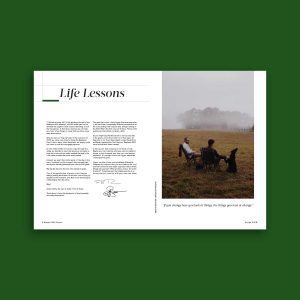
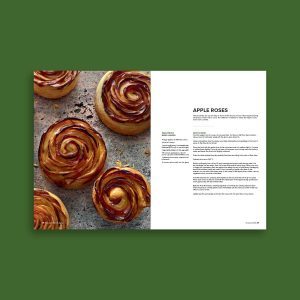








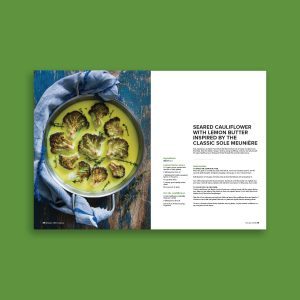
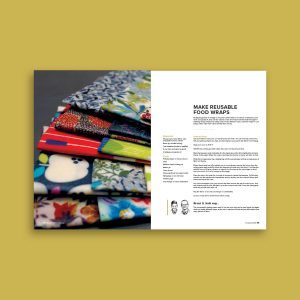
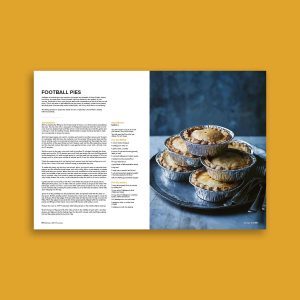
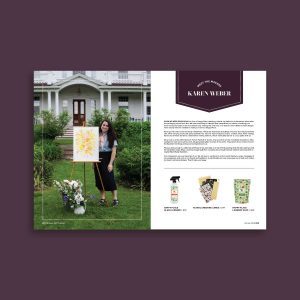
With 17 new seasonal recipes, 15 DIY projects to help you extract the essence of autumn, and the Made-in-America Gift Guide, there’s a lot to keep you busy leading up to the holidays!
And did we mention that the Beekman 1802 Almanac has NO advertisements? It’s printed on American paper with American ink, and we only sell it in our Mercantile or by subscription and print only what is needed so that not a single copy is ever wasted. Brent wrote a post on our facebook page about it which you can read below.
Grab your yearly subscription now and save $10 off the cover price. We’re looking forward to having you join the Almanac Neighborhood.
The post The Sights of Autumn appeared first on Beekman 1802.
August 3, 2018
18(+02) Road Trips to take this Summer
Whether you’re in it for the views, the snacks or the roadside spectacles, summer is the perfect time to take a road trip. Check out these 18 (+2) facts about trippin’ and plan your best summer vacation right now.







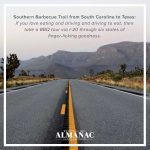










What is an 18(02) post without your bonus 02!

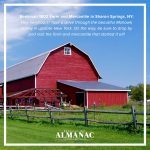
The post 18(+02) Road Trips to take this Summer appeared first on Beekman 1802.
18(+02) Favorite Ice Creams
Do you think that a person’s favorite ice cream flavor reveals their personality? Does vanilla mean you’re boring or practical? Is Black Raspberry a telling sign of someone’s sinister side? Does a preference for Moose Tracks mean that person is outdoorsy? Or just has a mean sweet tooth?
We don’t subscribe to ice cream personality tests, but we do subscribe to learning all the fun facts about our favorite frozen confection.












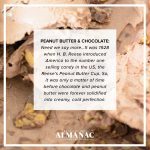
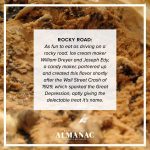




It was hard to narrow down to just 18. Luckily, we have the bonus 02.
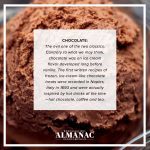

The post 18(+02) Favorite Ice Creams appeared first on Beekman 1802.



